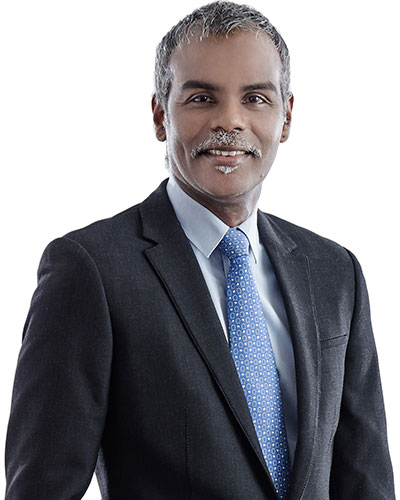
Fatty liver disease, now known as metabolic dysfunction-associated steatotic liver disease (MASLD), is an insidious yet poorly understood threat to our health.
Metabolic dysfunction-associated steatotic liver disease (MASLD) – more commonly known as fatty liver disease – is a silent yet alarming health crisis sweeping through Asia. The global prevalence of MASLD has been increasing over time; it is now recognised as the most common cause of chronic liver disease.
Fatty liver disease has grown rapidly in tandem with the twin epidemics of obesity and diabetes, affecting every one in 3 individuals.
Dr Ganesalingam Kanagasabai, Consultant Gastroenterologist, at the Subang Jaya Medical Centre (SJMC) explains the link between MASLD, diabetes and cardiovascular disease and why it is an increasingly concerning disease.
ForLife (FL): What is fatty liver disease?
Dr Ganesalingam Kanagasabai (Dr GK): Fatty liver disease, now referred to as MASLD, is a condition characterised by the accumulation of excess fat in the liver (steatosis) in the presence of at least one cardiometabolic risk factor. Other causes of excess fat in the liver includes alcohol, certain drugs and certain viral infections. Cardiometabolic risks are risk factors that increase the likelihood of experiencing vascular events such as a heart attack and strokes or developing diabetes. These include abdominal obesity, insulin resistance or diabetes, high blood pressure and an unfavourable cholesterol profile. MASLD ranges from simple fatty liver (steatosis) to metabolic dysfunction associated steatohepatitis (MASH), which is an aggressive form of liver inflammation, and can progress to fibrosis, cirrhosis, and liver cancer. Fatty liver disease is now also considered a significant risk factor for cardiovascular disease (CVD), non-liver malignancies, lung diseases, and chronic kidney disease (CKD), osteoarthritis, obstructive sleep apnea and polycystic ovary syndrome.
FL: What are some of the risk factors for MASLD?
Dr GK: The most common risk factor for MASLD is obesity. An unhealthy diet, rich in ultra processed foods, unhealthy fats, sugary items and red meat, has significantly contributed to the obesity pandemic in Malaysia. The National Health and Morbidity Survey (NHMS) 2023 found that some 54.4% of Malaysian adults are overweight or obese.
Another common risk factor is diabetes. Individuals with type 2 diabetes are at an increased risk of MASLD and liver damage. These individuals have excess insulin and glucose in the blood which promotes fat storage in the liver cells, leading to fat accumulation. Type 2 diabetes is also likely to accelerate steatohepatitis progression to cirrhosis. Additionally, diabetes can also cause inflammation and oxidative stress in the liver, contributing to liver damage and the progression of fatty liver disease.
Other risk factors include high blood pressure and an unfavourable cholesterol profile. The more risk factors you have, the higher the risk of liver inflammation and fibrosis. Making matters worse, the NHMS 2023 found that only 4.9% of adults consumed the recommended daily servings of fruit and vegetables and 29.9% of adults were physically inactive, which could increase the chances of getting high blood pressure and high cholesterol levels.
FL: What are the common symptoms of MASLD?
Dr GK: MASLD often shows no symptoms at all, until the liver has failed. Symptoms of liver cirrhosis and liver failure include:
- yellowness of the eyes and skin (jaundice)
- bruising easily
- dark urine
- swelling of the tummy area (ascites)
- vomiting blood
- dark black tarry poo
- periods of confusion, forgetting things, mood changes or poor judgement (encephalopathy)
- itching skin
The silent nature of the disease, with little to no symptoms, often leads to late diagnosis when complications such as liver inflammation (MASH), fibrosis, cirrhosis, and liver cancer have already developed.

Dr Ganesalingam Kanagasabai, Consultant Gastroenterologist at SJMC.
FL: How is MASLD detected and how can this disease be managed?
Dr GK: MASLD is often detected during routine blood tests with the liver function tests showing raised liver enzymes, or through an abdominal ultrasound. One of the simplest tests to do is to calculate the FIB-4 score using the patients age, liver enzyme values and platelet count.
Patients with MASLD with a FIB -4 count of more than 1.3 may be at risk of having significant liver fibrosis. These patients should be referred to a gastroenterologist for further evaluation, including a fibroscan, which is a special ultrasound technology that can measure liver stiffness (hardness) and the amount of fat in your liver.
It is crucial to identify the patients with MASLD who are at risk of disease progression to MASH, cirrhosis and liver cancer.
FL: What are the treatments available for MASLD?
Dr GK: The number one killer in MASLD is cardiovascular diseases, including heart attacks and strokes. It is therefore important to manage all the cardio-metabolic risk factors. Diabetes and high blood pressure must be well controlled and cholesterol medication should be prescribed if indicated. Weight reduction in overweight individuals is essential. A bodyweight reduction of ≥5% is required to reduce liver fat content, 7-10% to improve inflammation, and ≥10% to improve fibrosis. It also important to stop smoking, minimize alcohol consumption, exercise regularly and eat a healthy diet.
Patients with MASH or cirrhosis should be monitored regularly by their gastroenterologist. These patients are at an increased risk of liver cancer and should undergo regular surveillance. Patients with end stage liver failure might require a liver transplant.
The good news is that a drug known as resmetirom was approved for the treatment of MASLD in America earlier this year, for patients with significant fibrosis in the liver. There are also several other drugs that are currently undergoing phase 3 trials. I am hopeful that resmetirom and other drugs will soon be available in Malaysia for the treatment of MASLD.
FL: How effective are supplements like omega-3 fatty acids and vitamin E in managing MASLD symptoms?
Dr GK: Supplements like omega-3 are not recommended to manage MASLD, since there is insufficient evidence of their safety profile and their effectiveness in reducing liver damage/fibrosis and liver-related outcomes in MASLD. Some supplements do have anti-inflammatory properties that might reduce liver enzymes, but this has not translated to improved liver fibrosis.
It is also important to remember that patients with MASLD are more likely to die from a heart attack, a stroke or non-liver cancer. Treatment should be focused on reducing the risk of these diseases. The one thing that might help is coffee! Coffee consumption – caffeinated or not – has been shown to have a protective association with MASLD , as it has been found to reduce liver fibrosis, death from chronic liver disease and liver cancer.
FL: What is the easiest way to prevent MASLD?
Dr GK: The easiest way to prevent MASLD is by adopting a healthy lifestyle. Physical activity and exercise are recommended to reduce liver fat, tailored to the individual’s preference and ability (preferably >150 min/week of moderate or 75 min/week of vigorous-intensity physical activity). Improving the quality of one’s diet (similar to the Mediterranean dietary pattern), limiting the consumption of ultra-processed food (rich in sugars and saturated fat) and avoiding sugar-sweetened beverages are highly recommended.
On a larger scale, governments, healthcare providers, and communities can play a vital role in promoting healthy lifestyles and raising awareness about MASLD. Educating primary care physicians about early detection of MASLD and how to identify patients at risk of disease progression is key. Implementing public health programs such as nutrition education and accessible exercise facilities, and then disseminating this information on social media can also help create and awareness and thus, a healthier environment for the population.
Source:
